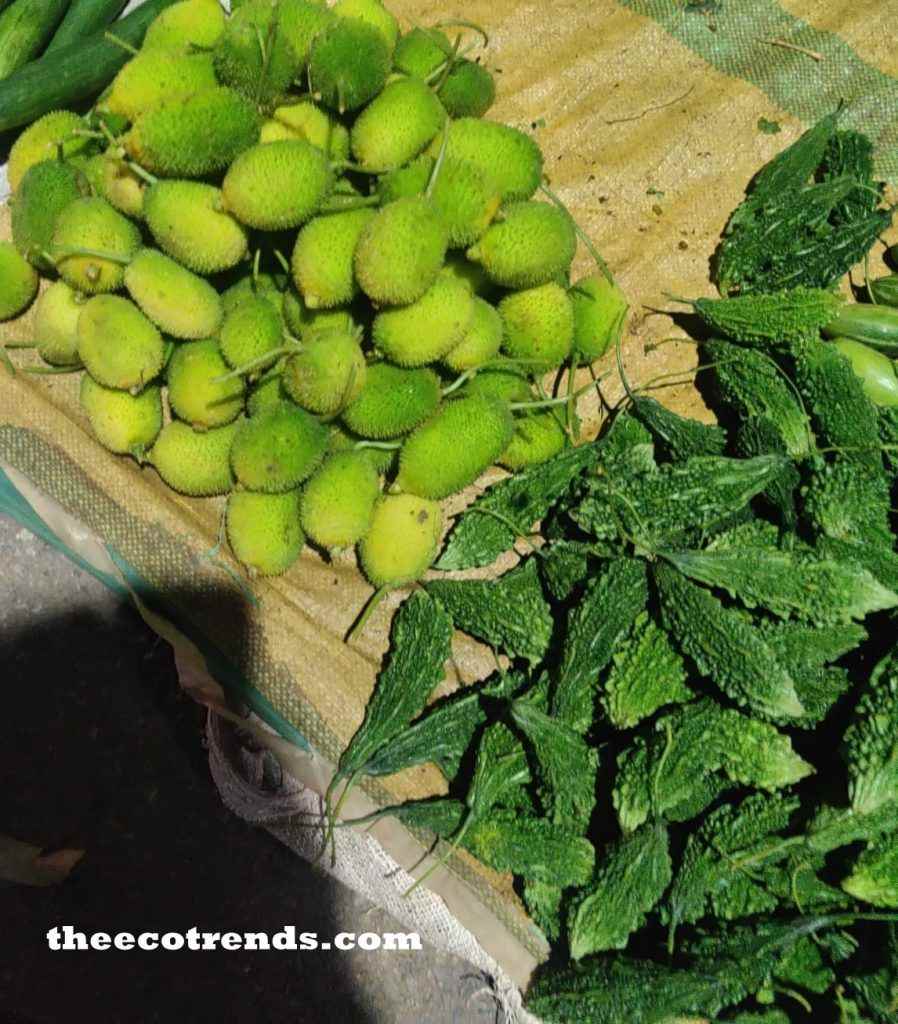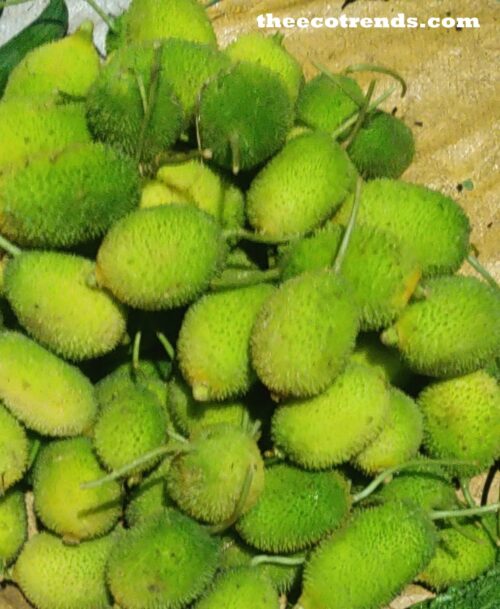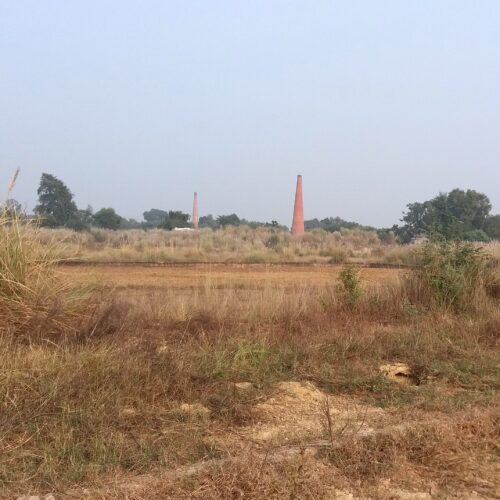Kheksa is taxonomically known as Momordica dioica. It is commonly known as Kheksa, Spiny gourd, bristly Balsam pear, and Prickly carolaho, Kantola etc. It belongs to the family Cucurbitaceae. In Sanskrit it is known as Karkotaki or Karkoti. Rajasthani people call it wild karela or Ban Karela. In Jharkhand and Bihar it is called as Kheksi or Kheksa. It is less reported from U.P., and other states of India except Jharkhand.

Kheksa has specific roots that collect food. These are conical in shape. Male and female wines of this plant are different. The male wine does not bear fruits and it is called as Kakora. Fruits of Kheksa are spiny and green from outside while they are white from inside. Ripe fruits are yellow to red in colour.
In India it is used as vegetable. It is found in the wild but it is also grown by tubers for propagating as vegetable. The fruits are cooked dry or with spices to make tasty vegetables.
Kheksa plant has small leaves and small yellow flowers. It has distinct male and female plants.
The plant has various important nutrients and vitamins as reported by scientists from time to time. The herbalists have reported that it has great medicinal values. In India, it is traditionally known as a remedy for Diabetes Mellitus.
Traditionally, Kheksa is known to control headache, ear-ache, and cough, stomach related diseases etc. if eaten in prescribed form and weight for some time.
Kheksa is also reported to control hair fall. In Ayurveda it is reported to remove vat, pitta, and cough. It increases digestive power, libido, absorbing capacity of intestine, and power of heart.
It is traditionally used to remove nausea, respiratory problems, fever, emaciation, piles, tumor, rhinitis, and urinary problems.
It is also reported that its leaves if consumes in specific form and volume, can increase sexual power, can remove worms, and can cure piles.
In Jharkhand it grown in the wild like on barren lands or in forests. Here it is a source of minor income of tribal ladies who collect it and sell in the local markets on high prices. It is least seen in the big and daily markets of Jharkhand. However, in view of its medicinal importance it must be grown on large scale in the state.
Key Words: Kheksa, Kakora, Cucurbitaceae, tribal ladies, medicinal




